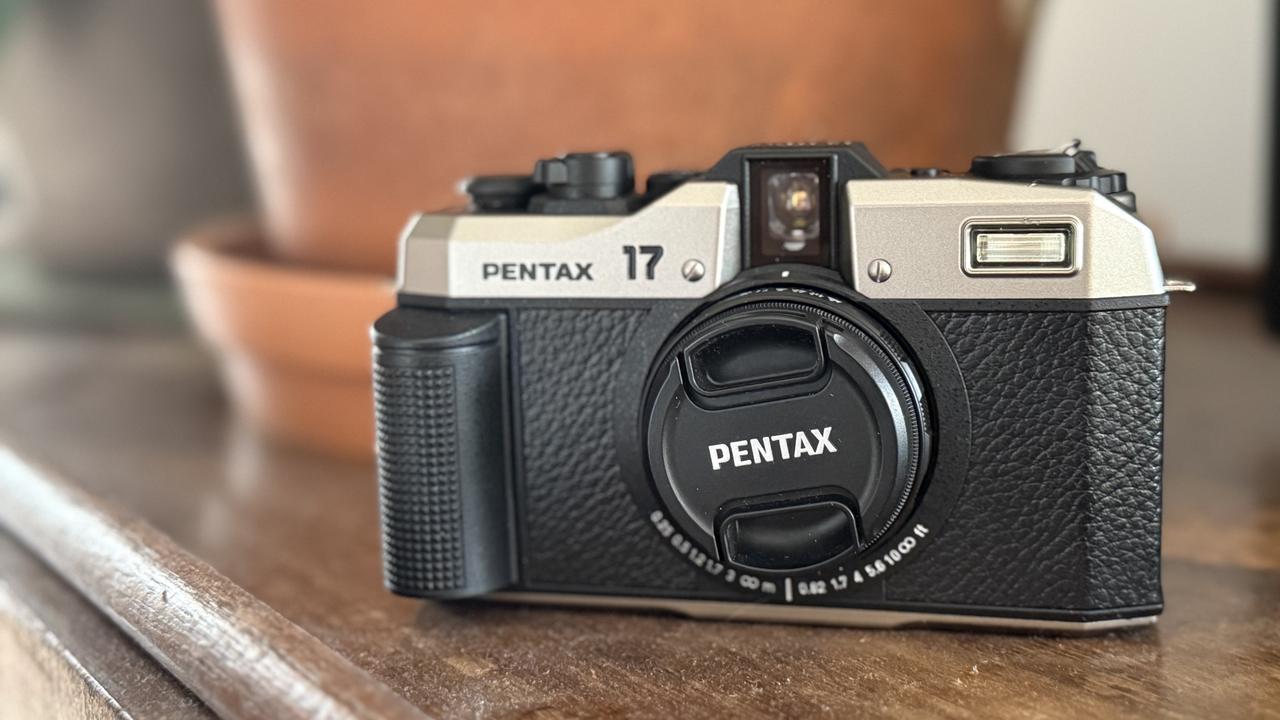Dell XPS 13 (7390) review: New processors add power to beauty of XPS range
Dell XPS laptops are getting better and better and its latest XPS 13 (7390) 2-in-1 is versatile and attractive.
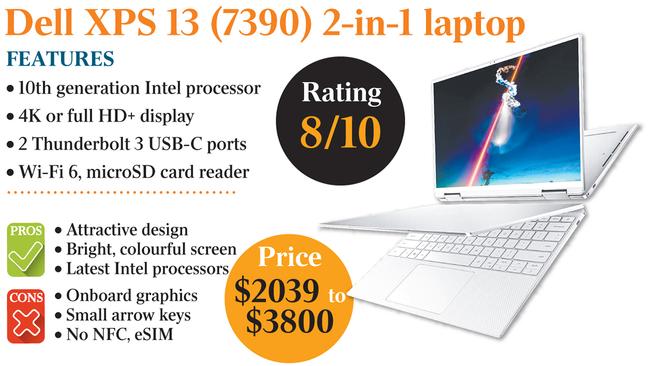
Dell XPS laptops are getting better and better and its latest XPS 13 (7390) 2-in-1 is versatile and attractive. Models have 10th generation Intel Core i3, i5 and i7 processors. There’s no passing off older kit — this is gleaming new 2019 tech.
Dell says the new 10th generation processors offer more powerful performance while delivering almost 17 hours of battery life performing everyday tasks. We’ll see a bit later.
This is a beautiful laptop with a thin aluminium frame and a small bezel around the display.
Images on the display are clear and colourful, with a glossy look. You feel you are looking at a poster when viewing the screen. The screen is HDR400 certified and Dolby Vision certified, with up to 500 nits brightness.
While this is a premium laptop, it comes with integrated Intel UHD graphics and Intel Iris Plus graphics, and there’s no discrete graphics card.
Dell has refined the InfinityEdge display to a 16:10 aspect ratio, which is a compromise. The common 16:9 format on media consumption laptops lets you enjoy movies generally without black bars top and bottom. The downside is the shallowness of the screen when scrolling web pages.
For me, the ideal laptop screen shape for productivity is 3:2, as on Microsoft Surface devices.
Having 16:10 is a tad better than 16:9 in offering some depth in pages you scroll.
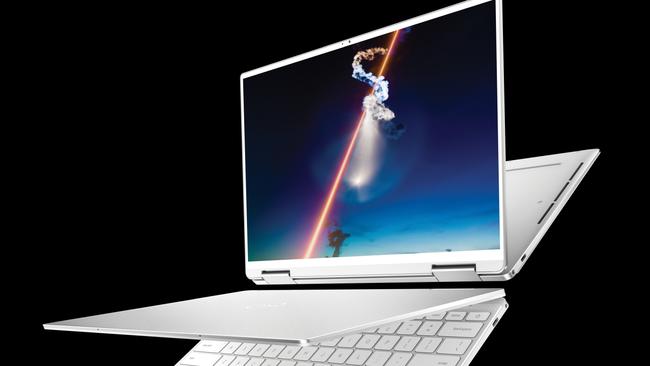
The screen is secured to the body by two wide metal hinges that let you rotate the display a full 360 degrees. It is a firm movement. The screen is slightly lower set, which means the illusion of a smaller bezel on the bottom side.
The upgrading to 10th generation processors has seen Dell revamp its cooling system away from a fanless design to dual fans.
It argues the processor is more powerful than before. It says the laptop also optimises its power output to the processor based on the specific workloads.
There’s the promise of faster Wi-Fi speeds. This 2-in-1 is compatible with the new Wi-Fi 6 standard but speeds are tweaked using what’s called Killer AX1650, a module that optimises gameplay, streaming and communications. It comes from a collaboration between Intel and Rivet Networks. Dell rates the theoretical wireless throughput at up to 2.4 gigabits per second.
In the end, there’s newer wireless technology on this laptop than on new devices that still offer the old 802.11ac standard that has been around since 2013.
When you open the lid from standby, the screen bounces back to life quickly thanks to a sensor.
The laptop supports Windows Hello fingerprint authentication; you touch the power button. There’s no face recognition.
The keyboard is spacious. There is only a thin margin on the left and right sides, so the keys are spread out across the device. But they don’t offer much travel. The trackpad is large but not overly so.
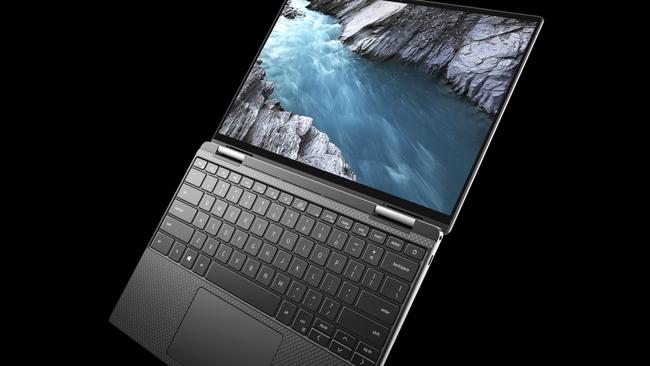
My beef was the small arrow keys at the bottom right: they are tiny enough to easily mis-hit.
Dell has managed to further shrink its front-facing webcam to 2.25mm, which allows it to sit at the top of the screen without making the bezel thicker. Dell used to position its webcams at the bottom of the display, which meant the cam captured spectacular images of nose hairs and sagging chins. These aren’t features you want to highlight when on a video call to lovers and friends alike.
Dell has joined the modern world by ditching USB-A sockets. There are two USB Type-C ports, one on either side of the laptop, so you will need an adaptor for older USB devices. That will annoy some. However, USB-C is faster technology and is quickly becoming universal. Dell lessens the pain by including a USB-A to USB-C adaptor in the box this time around.
Both USB-C ports support Thunderbolt 3, with eight times the theoretical transfer speed of old USB-3. You can use the ports to charge the laptop and connect to many devices. One port should support up to two 4K displays.
There’s a microSD card reader at left, and a 3.5mm headphone/microphone combo jack at right.
There’s a few things missing that you might want such as NFC (Near Field Communication) and an eSIM for connecting directly to the cellular network.
Much of the configuration depends on which model of this 2-in-1 that you buy.
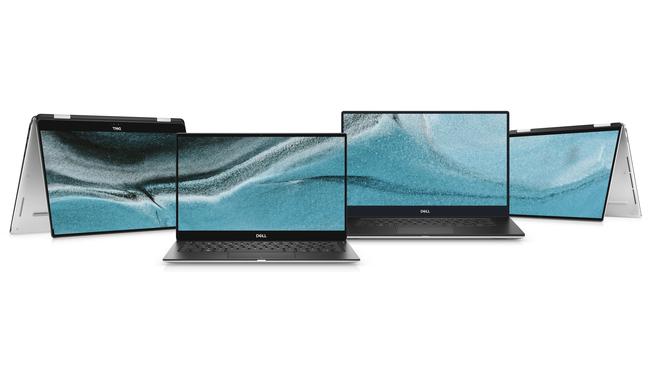
There’s the choice between Intel Core i3, i5 and i7 processors. You can have as little as 4GB LPDDR4 SDRAM memory and as much as 32GB. You can choose from 256GB, 512GB and 1TB of PCIe solid state drive storage.
The display is 13.4 inches and you can choose between a 4K (3840x2400) display and a full HD+ display (1920x1200). You can use a stylus with this laptop; Dell provides one in the box.
My review unit has an Intel Core i7-1065G7 CPU rated at 1.5 to 3.5 GHz, a 4K monitor, 16GB of RAM and a 512GB solid state drive. That places it at the high end of the range. I ran our benchmarks. Cinebench 15 returned what I had expected, an average score for the on-board graphics (35.45fps) and a good score for CPU performance (539cb). Novabench returned a score of 1781, describing the CPU as “looking good” and GPU as a “possible problem”.
I also ran our video test, playing a 1080p clip continuously at 50 per cent brightness, about 250 nits. This gave a surprisingly poor result of five hours, no doubt due to the 4K panel. It fared better with Passmark’s BatteryMon, which calculated just on 10 hours with light use. The improvement with going to 4K isn’t so spectacular on a smaller screen, so if you can go without it, you’ll save some battery life choosing an HD panel.
In the end, the XPS 13 (7390) is a very good 2-in-1, attractive and well suited to media consumption and everyday office work. Don’t expect stellar graphics performance. Whether the 16:10 screen suits you is worth thinking about if your main use is work.

